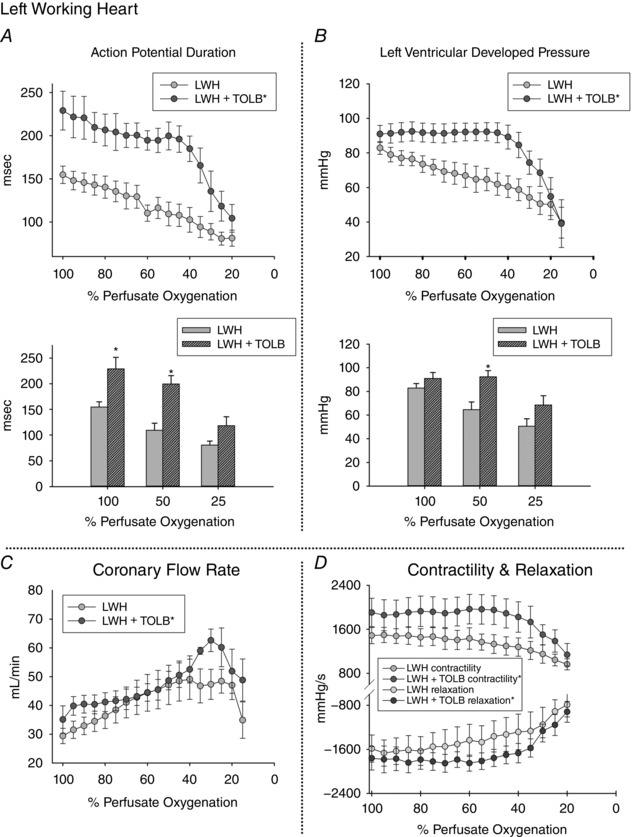Figure 6. Effect of KATP channel inhibition (1 μm TOLB) on APD, CFR, LVDP, contractility, and relaxation while pacing LWHs at a CL of 330 ms.

A, APDs were longer in LWHs with TOLB than for APDs measured without TOLB at all levels of perfusate oxygenation above 25%. With TOLB, APD shortened dramatically after 40% perfusate oxygenation. Without TOLB, APD shortened in a linear fashion throughout deoxygenation. At 25% oxygenation, APDs are the same for LWHs with and without TOLB. B, LVDP was higher in LWHs with TOLB than for LVDP measured without TOLB at all mid‐levels of perfusate oxygenation. With TOLB, LVDP for the high and mid‐levels of deoxygenation was constant, yet dropped dramatically after 40% perfusate oxygenation. Without TOLB, LVDP dropped in a linear fashion throughout deoxygenation. At 25% oxygenation, LVDP was the same for LWHs with and without TOLB. C, throughout deoxygenation, average coronary flow was significantly higher for LWHs with TOLB. With TOLB, coronary flow increased to a greater extent within the lower levels of oxygenation and dropped dramatically after 30% oxygenation. Without TOLB, coronary flow increased until 40% oxygenation, stopped increasing at oxygenation levels between 20% and 40% and dropped dramatically after 20% oxygenation. D, with TOLB, left ventricular contractility and relaxation curves were more positive (contractility) and more negative (relaxation) than for curves for LWHs without TOLB. Values are the mean ± SE; LWH, n = 6; LWH + TOLB, n = 5. *Significant difference between values measured with and without TOLB.
